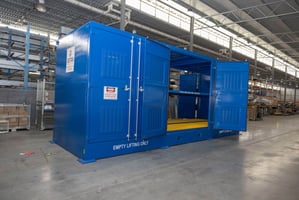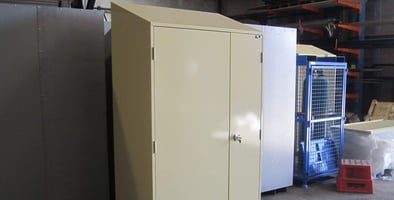Storing dangerous goods requires careful consideration and planning to ensure the safety of workers, the public, and the environment. Dangerous goods are any substances or articles that can pose a risk to health, safety, property, or the environment. These goods may include chemicals, gases, explosives, flammable liquids, and more. In this article, we'll discuss the key considerations for safe dangerous goods storage.
1. Identify the Hazards and Risks
The first step in storing dangerous goods is to identify the hazards and risks associated with the substances. This includes considering toxicity, flammability, reactivity, and corrosivity. The safety data sheets (SDS) provided by the manufacturer or supplier of the dangerous goods should be reviewed to identify these hazards and the appropriate safety measures needed.
2. Choose the Right Storage Facility
The next step is to choose the right storage facility for the dangerous goods. The facility should be designed and constructed to meet the safety requirements of the goods being stored. This includes proper ventilation, lighting, and fire protection systems. The storage area should also be kept clean and free of debris to prevent spills and contamination.
3. Use Proper Containers and Labelling
The dangerous goods should be stored in appropriate containers that are designed to handle the specific hazards and risks of the substances. The containers should be properly labelled with the appropriate hazard warnings and safety information. The labelling should be clear, legible, and durable to prevent confusion or damage to the labels.
4. Implement Proper Handling Procedures
Proper handling procedures should be established and communicated to all workers handling dangerous goods. This includes training on the proper use of personal protective equipment (PPE), handling and storage procedures, emergency response procedures, and more. Workers should also be trained to recognise and respond to potential hazards and risks.
5. Regular Inspections and Maintenance
Regular inspections and maintenance of the storage facility and containers are critical to maintaining a safe environment for the dangerous goods. This includes checks for leaks, spills, and damage to containers or storage areas. Any issues should be addressed promptly to prevent further risks and hazards.
6. Emergency Response Planning
Emergency response planning is critical in case of spills, leaks, or other incidents involving dangerous goods. An emergency response plan should be established and communicated to all workers handling the dangerous goods. This plan should include procedures for evacuating the area, containing spills, and notifying emergency responders.
Dangerous goods stores
Storing dangerous goods requires careful consideration and planning to ensure the safety of workers, the public, and the environment. By following the key concerns outlined in this article, you can establish a safe and effective dangerous goods storage plan that meets your organisation's needs.
Dangerous goods stores are specialised containers designed to store hazardous materials and substances safely. These stores are typically used by businesses and industries that produce, use, or transport dangerous goods, such as chemicals, gases, explosives, or flammable liquids.
The purpose of a dangerous goods stores is to prevent accidental leaks, spills, or other types of release of hazardous material into the environment, which could pose a risk to human health and safety and the environment itself.
These solutions are made to withstand extreme temperatures, pressure, and weather conditions. They come in various sizes and shapes, depending on the type and quantity of the hazardous material to be stored.
- Some standard features of dangerous goods storage containers include:
- Ventilation systems to control temperature, humidity, and fumes
- Secondary containment systems to capture any spills or leaks
- Safety locks and alarms to prevent unauthorised access
- Labelling and signage to identify the type and quantity of hazardous material being stored
It is important to note that the handling, storing, and transporting hazardous materials are subject to strict regulations and guidelines. Businesses and industries that deal with dangerous goods must comply with these regulations to ensure the safety of their employees, the public, and the environment.
Tradesales range of dangerous goods stores
We have been designing, manufacturing, and delivering safe, certified, compliant dangerous goods stores for almost 20 years and our current lineup ranges from 1,000 litres to a whopping 32,000 litres.
Tradesales dangerous goods containers are designed to store and handle class 3 flammable and combustible liquids in compliance with AS 1940-2004 standards. These stores feature crane lifting lugs and forklift channels to facilitate easy transportation, while their doors can fold back 270° for convenient access.
The stores also come equipped with ISO locking bars for maximum security and cyclonic-proof construction to withstand harsh weather conditions. An integrated spill containment bund ensures that any spills or leaks are captured, and engineered footing details provide added stability. Overall, Tradesales DG stores are a reliable and secure solution for safely storing and handling dangerous goods.
Our technical sales consultants are happy to help if you have any questions about dangerous good storage and can be reached at 1800 999 521 or sales@tradesales.com.au. Join our mailing list for regular updates on our products and capabilities.



